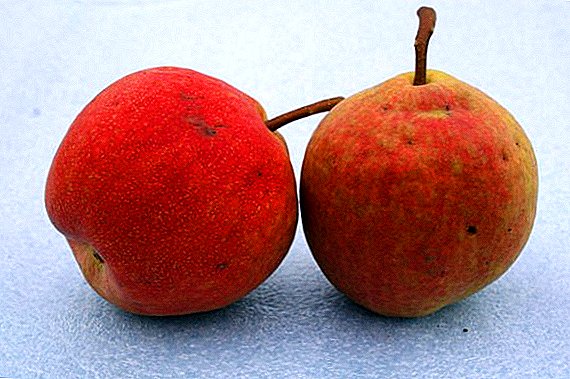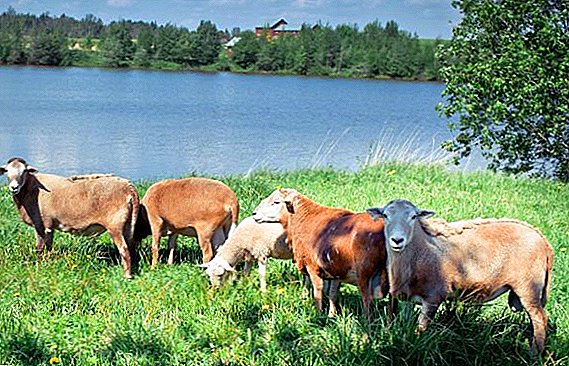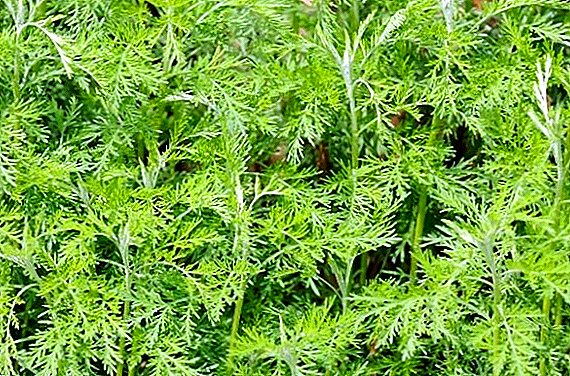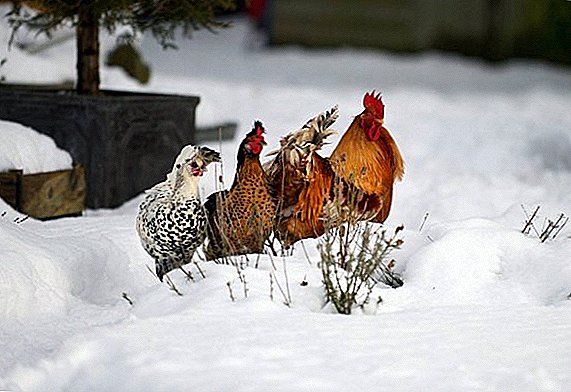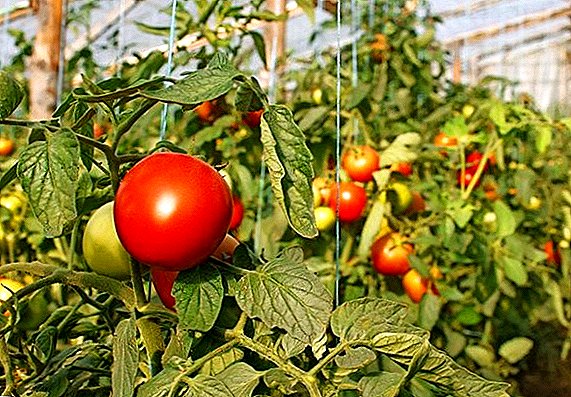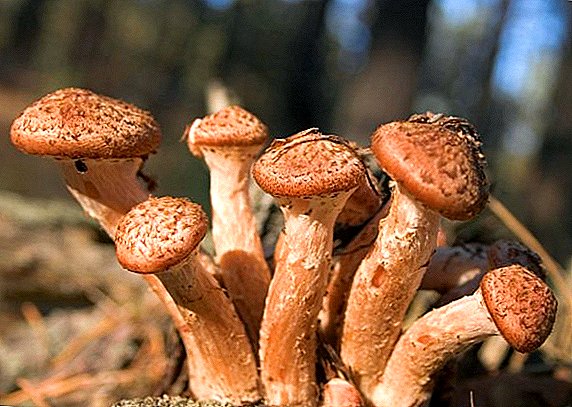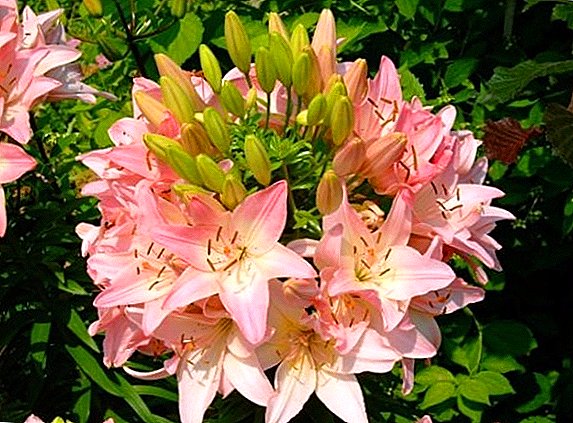
For the gardener, spring is time to be hot and difficult. And the capricious weather changes several times a day. How to guess the dates of sowing vegetables so that they are not spoiled by return frosts?
The best way out is to build an enclosed space for planting heat-loving crops, and then your plants will be able to grow in comfortable conditions long before the arrival of these summer days.
What is a greenhouse? What are the?
A greenhouse is a light house for plants, built entirely or partially from light-transparent materials. Him purpose - Protect plants from the cold weather and provide access to sunlight.
 Protection against frost using only thin transparent walls will be ineffective. Need additional heating. In large greenhouses, special furnaces with a pipe system are made for this purpose, electric heaters are turned on at night, or they are connected to the house heating system.
Protection against frost using only thin transparent walls will be ineffective. Need additional heating. In large greenhouses, special furnaces with a pipe system are made for this purpose, electric heaters are turned on at night, or they are connected to the house heating system.
For a greenhouse it is not suitable. Here main heat source serves biofuel - manure, dry leaves and grass, sawdust, bird droppings, peat.
To make a greenhouse or a small greenhouse to give to anyone who wants to do it yourself, many skills will not be required. Constructions of greenhouses invented a lot - from light portable to solid stationary. Budget options include the use of available tools. Ready kits of greenhouses made of durable plastic or metal arcs and film coating are on sale. Installing it in place takes just a few minutes.
The portable model is convenient because it can be easily mounted. anywhere, if necessary, remove or move to another part of the garden. This is the easiest option. In the case when there is no desire to annually engage in the construction of new greenhouses, it is more profitable to build stationary option.
At the first stage, it is necessary to determine the choice of the type of greenhouse, its purpose and prepare the necessary materials.
Portable greenhouses:

Constructions of portable models should differ in ease, convenience of installation, reliability.
Most often, portable modifications are made on the basis of arcs from pieces of polypropylene pipes, metal fittings or thick wire, or a batten of wooden bars. Dimensions depend on the height of future plants, but should not be too large. They are selected taking into account the available materials and convenience for operation.
Stationary greenhouses:
For the stationary option you will need to choose a permanent place, the whole construction to make as reliable as possibleusing durable materials. The choice of species and types is quite wide. They are made by:
- On the basis of a welded framework from a metal profile, a pipe, fittings;
- Using as a supporting structure of wooden bars and planks;
- With the help of the assembly of shields from the old window frames.
Interesting option greenhouses from old plastic bottles. This will not work out quickly, however, for those who have time and love unusual things, this option will be interesting. Connect your friends to the collection of material - empty plastic bottles of a certain size, color and shape - you can take long winter evenings with useful work. Having made the workpieces, in the spring it is not difficult to assemble the construction of a greenhouse for several hours on the spot.
Choosing a good place on the site
How correctly selected a place for your indoor garden, its effectiveness and future harvest depend on it.
 Fundamental rules:
Fundamental rules:
- In order to achieve the maximum duration of natural greenhouse lighting, it is necessary to orient it in the east-west direction.
- The presence of high fences or fruit trees with a spreading crown next to the greenhouse is undesirable - the shadows cast by them will "steal" a part of the necessary solar heat.
- You can not place it in the swampy area.
The rest of the site selection criteria are not so critical. A convenient approach, remoteness from the water source, an organic combination with the overall design of the site will not affect the yield, but in terms of the cost of maintenance and convenience, it is simply necessary to take into account all these details.
Preparatory work
Before starting work on the installation of a greenhouse, a number of preparatory operations will be required.
Soil preparation
 First of all would need:
First of all would need:
- Level the platform - cut off the protruding parts and fill the grooves.
- Release the soil from the roots of weeds.
- If necessary, pour a layer of drainage material to prevent stagnant water.
If you plan to use manure or another type biofuel for heating, the next step will be the layout of the site and the arrangement of the simplest foundation or box construction.
For planting seedlings of some crops is convenient to use. in-depth greenhouses. A ditch is dug up in the soil according to the size of the future greenhouse, the walls are sheathed with boards or other material. The ditch is filled with dry leaves and fresh manure for pererevaniya.
When the manure begins to "burn" and release heat, a layer of soil is poured on top, and the box is covered with film material, polycarbonate sheets or glazed wooden frames.
Foundation construction
For small film greenhouses there is no need to make a special foundation. And if the greenhouse is planned to be made using glazed frames, then it will be necessary to take care of the reliability of the foundation.
The best way - pour strip foundation around the perimeter of the future greenhouse. For this:
Mark up the base future greenhouses and dig shallow (enough 30-40 cm) ditch under the foundation. Fill the foundation cement mortar, increasing the height by installing a wooden or plastic crates. It remains to wait for the solution to solidify and the foundation is ready.
 Further, the whole process depends on the selected material. If the base of the greenhouse is selected metal frame, it is attached to the concrete base on a special anchor or bolts.
Further, the whole process depends on the selected material. If the base of the greenhouse is selected metal frame, it is attached to the concrete base on a special anchor or bolts.
Binding wooden greenhouse make of timber.
From for what purpose you are planning to build a greenhouse, depends on its type and size. So, a variant of an extension to a wall with a sloping lean-to transparent roof can be quite suitable for seedlings.
Greenhouse made of wood - often used option. The ease of wood processing and its availability - the main factors in popularity. Below we consider two construction options greenhouses made of wood.
Construction of an express greenhouse in the country with their own hands
The name itself - express says that it is built very quickly. Wooden crate consists of two parts, which form the walls of the greenhouse. The greenhouse itself reminds triangular tunnel. The height also depends on the width of the base.
In order to independently make an express greenhouse, you will need to make two frames of wooden bars with vertical veins in a certain distance. It should not be too big. Ideally, the distance between them is about 50-60 cm, which ensures reliable fastening of covering material - film, spandbond or sheets of transparent plastic.
 At the base of the greenhouse, these two frames at the edges are interconnected by wooden bars.
At the base of the greenhouse, these two frames at the edges are interconnected by wooden bars.
With a significant length of the greenhouse in order to increase the rigidity of the structure, it is reinforced with additional connecting elements in 1-2.5 meters.
It is easy to make and install an express greenhouse on site, and it serves not one year. If you use it to cover a deep greenhouse, it is suitable for growing higher crops.
Stationary mini greenhouse made of wood with their own hands
For the construction of a greenhouse on a permanent place should be done capital foundation. It can be laid out of old bricks on cement mortar, ready-made foundation blocks can be used, or it can be poured in the usual way.
The next step is to make the building strapping. A wooden bar is laid on the perimeter on the foundation, its cross section should be no less than 10x15 cm. The bars are interconnected in any way - dovetail connection, half tree, on the anchor, or using metal linings.
A wooden crate is fastened to the trim of the timber, consisting of vertical posts and horizontal bars with a step of 0.5-1 m. If you plan to film a film, you can stretch it over the frame or make modules of wooden frames with a film stretched in them, which are connected between in the finished structure.
 Principle of construction It consists in the manufacture of a wooden frame on which the covering material is attached. The roof profile can be any, but must be present small biaswhich will ensure the flow of precipitation.
Principle of construction It consists in the manufacture of a wooden frame on which the covering material is attached. The roof profile can be any, but must be present small biaswhich will ensure the flow of precipitation.
Inside it is not bad to dig a well that is filled with biowaste, and a rather thick layer of fertile soil is poured in from above. The power of the soil layer should protect the deep roots of the plant from burning out. Its height is 20-30 cm - the best option.
Climatic conditions in any locality are not permanent. From year to year they change, which adversely affects garden crops. The use of greenhouses for their cultivation does not relieve from the hassle, however, the risks are reduced very significantly.


